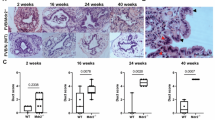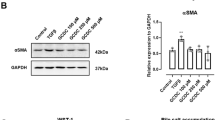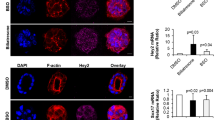Abstract
Ursodeoxycholic acid (UDCA) exerts anticholestatic effects in various cholestatic disorders. Several potential mechanisms and sites of action of UDCA have been unraveled in clinical and experimental studies, which could explain its beneficial effects. The relative contribution of these mechanisms to the anticholestatic action of UDCA depends on the type and stage of the cholestatic injury. In early-stage primary biliary cirrhosis and primary sclerosing cholangitis, protection of injured cholangiocytes against the toxic effects of bile acids might prevail. Stimulation of impaired hepatocellular secretion by mainly post-transcriptional mechanisms, including stimulation of synthesis, targeting and apical membrane insertion of key transporters, seems to be relevant in more advanced cholestasis. In intrahepatic cholestasis of pregnancy, stimulation of impaired hepatocellular secretion could be crucial for rapid relief of pruritus and improvement of serum liver tests, as it is in some forms of drug-induced cholestasis. In cystic fibrosis, stimulation of cholangiocellular calcium-dependent secretion of chloride and bicarbonate ions could have a major impact. Inhibition of bile-acid-induced hepatocyte apoptosis can have a role in all states of cholestasis that are characterized by hepatocellular bile-acid retention. Different mechanisms of action could, therefore, contribute to the beneficial effect of UDCA under various cholestatic conditions.
Key Points
-
Ursodeoxycholic acid (UDCA) exerts its beneficial effects in various cholestatic disorders mainly at the level of hepatocytes and cholangiocytes
-
UDCA stimulates impaired hepatocyte secretion by mostly post-transcriptional mechanisms, which include enhanced synthesis, targeting and membrane insertion of transporters
-
UDCA exerts antiapoptotic effects in hepatocytes at the level of the mitochondria
-
UDCA might protect cholangiocytes against the toxic effects of endogenous bile acids by rendering bile less toxic and modifying micelle formation, rather than by direct membrane effects
-
UDCA might stimulate impaired cholangiocellular secretion of chloride and bicarbonate anions, by transcriptional and post-transcriptional mechanisms
This is a preview of subscription content, access via your institution
Access options
Subscribe to this journal
Receive 12 print issues and online access
$209.00 per year
only $17.42 per issue
Buy this article
- Purchase on SpringerLink
- Instant access to full article PDF
Prices may be subject to local taxes which are calculated during checkout





Similar content being viewed by others
References
Hofmann AF (1994) Pharmacology of ursodeoxycholic acid, an enterohepatic drug. Scand J Gastroenterol Suppl 204: 1–15
Leuschner U et al. (1985) Gallstone dissolution with ursodeoxycholic acid in patients with chronic active hepatitis and two years follow-up. A pilot study. Dig Dis Sci 30: 642–649
Poupon R et al. (1987) Is ursodeoxycholic acid an effective treatment for primary biliary cirrhosis? Lancet 1: 834–836
Paumgartner G and Beuers U (2004) Mechanisms of action and therapeutic efficacy of ursodeoxycholic acid in cholestatic liver disease. Clin Liver Dis 8: 67–81
Lazaridis KN et al. (2001) Ursodeoxycholic acid 'mechanisms of action and clinical use in hepatobiliary disorders'. J Hepatol 35: 134–146
Poupon R and Poupon RE (2000) Treatment of primary biliary cirrhosis. Baillieres Best Pract Res Clin Gastroenterol 14: 615–628
Goulis J et al. (1999) Randomised controlled trials of ursodeoxycholic-acid therapy for primary biliary cirrhosis: a meta-analysis. Lancet 354: 1053–1060
Gluud C and Christensen E (2002) Ursodeoxycholic acid for primary biliary cirrhosis. The Cochrane Database of Systematic Reviews, Issue 4, Art. No CD000551
Poupon RE (2000) Ursodeoxycholic acid for primary biliary cirrhosis: lessons from the past—issues for the future. J Hepatol 32: 685–688
Palma J et al. (1997) Ursodeoxycholic acid in the treatment of cholestasis of pregnancy: a randomized, double-blind study controlled with placebo. J Hepatol 27: 1022–1028
Glantz A et al. (2005) Intrahepatic cholestasis of pregnancy: a randomized controlled trial comparing dexamethasone and ursodeoxycholic acid. Hepatology 42: 1399–1405
Kondrackiene J et al. (2005) Efficacy and safety of ursodeoxycholic acid versus cholestyramine in intrahepatic cholestasis of pregnancy. Gastroenterology 129: 894–901
Trauner M and Boyer JL (2003) Bile salt transporters: molecular characterization, function, and regulation. Physiol Rev 83: 633–671
Sauer P et al. (1999) Influence of cholestasis on absorption of ursodeoxycholic acid. Dig Dis Sci 44: 817–822
Hruz P et al. (2006) Adaptive regulation of the ileal apical sodium dependent bile acid transporter (ASBT) in patients with obstructive cholestasis. Gut 55: 395–402
Jazrawi RP et al. (1994) Kinetics of hepatic bile acid handling in cholestatic liver disease: effect of ursodeoxycholic acid. Gastroenterology 106: 134–142
Medina JF et al. (1997) Decreased anion exchanger 2 immunoreactivity in the liver of patients with primary biliary cirrhosis. Hepatology 25: 12–17
Fickert P et al. (2001) Effects of ursodeoxycholic and cholic acid feeding on hepatocellular transporter expression in mouse liver. Gastroenterology 121: 170–183
Marschall HU et al. (2005) Complementary stimulation of hepatobiliary transport and detoxification systems by rifampicin and ursodeoxycholic acid in humans. Gastroenterology 129: 476–485
Beuers U et al. (2001) Tauroursodeoxycholic acid inserts the apical conjugate export pump, Mrp2, into canalicular membranes and stimulates organic anion secretion by protein kinase C-dependent mechanisms in cholestatic rat liver. Hepatology 33: 1206–1216
Kurz AK et al. (2001) Tauroursodesoxycholate-induced choleresis involves p38 (MAPK) activation and translocation of the bile salt export pump in rats. Gastroenterology 121: 407–419
Dombrowski F et al. (2006) Tauroursodeoxycholic acid inserts the bile salt export pump into canalicular membranes of cholestatic rat liver. Lab Invest 86: 166–174
Kubitz R et al. (2004) Trafficking of the bile salt export pump from the Golgi to the canalicular membrane is regulated by the p38 MAP kinase. Gastroenterology 126: 541–553
Crawford JM (1996) Role of vesicle-mediated transport pathways in hepatocellular bile secretion. Semin Liver Dis 16: 169–189
Kubitz R et al. (2005) Biliary transport systems: short-term regulation. Methods Enzymol 400: 542–557
Beuers U et al. (1993) Tauroursodeoxycholic acid stimulates hepatocellular exocytosis and mobilizes extracellular Ca2+ mechanisms defective in cholestasis. J Clin Invest 92: 2984–2993
Beuers U et al. (1993) Effects of tauroursodeoxycholic acid on cytosolic Ca2+ signals in isolated rat hepatocytes. Gastroenterology 104: 604–612
Bouscarel B et al. (1993) Ursodeoxycholate mobilizes intracellular Ca2+ and activates phosphorylase a in isolated hepatocytes. Am J Physiol 264 (Pt 1): G243–G251
Beuers U et al. (1996) Tauroursodeoxycholic acid activates protein kinase C in isolated rat hepatocytes. Gastroenterology 110: 1553–1563
Stravitz RT et al. (1996) Hepatocellular protein kinase C activation by bile acids: implications for regulation of cholesterol 7 alpha-hydroxylase. Am J Physiol 271 (Pt 1): G293–G303
Bouscarel B et al. (1995) Ursodeoxycholic acid inhibits glucagon-induced cAMP formation in hamster hepatocytes: a role for PKC. Am J Physiol 268 (Pt 1): G300–G310
Bouscarel B et al. (1999) Signal transduction and hepatocellular bile acid transport: cross talk between bile acids and second messengers. Gastroenterology 117: 433–452
Milkiewicz P et al. (2002) Hepatoprotection with tauroursodeoxycholate and beta muricholate against taurolithocholate induced cholestasis: involvement of signal transduction pathways. Gut 51: 113–119
Beuers U et al. (1998) Ursodeoxycholic acid in cholestasis: potential mechanisms of action and therapeutic applications. Hepatology 28: 1449–1453
Kubitz R et al. (2004) Ca2+-dependent protein kinase C isoforms induce cholestasis in rat liver. J Biol Chem 279: 10323–10330
Beuers U et al. (1999) Modulation of protein kinase C by taurolithocholic acid in isolated rat hepatocytes. Hepatology 29: 477–482
Beuers U et al. (2003) Taurolithocholic acid exerts cholestatic effects via phosphatidylinositol 3-kinase-dependent mechanisms in perfused rat livers and rat hepatocyte couplets. J Biol Chem 278: 17810–17818
Haussinger D et al. (2003) Involvement of integrins and Src in tauroursodeoxycholate-induced and swelling-induced choleresis. Gastroenterology 124: 1476–1487
Schliess F et al. (1997) Mitogen-activated protein kinases mediate the stimulation of bile acid secretion by tauroursodeoxycholate in rat liver. Gastroenterology 113: 1306–1314
Stiehl A et al. (1995) Biliary secretion of bile acids and lipids in primary sclerosing cholangitis. Influence of cholestasis and effect of ursodeoxycholic acid treatment. J Hepatol 23: 283–289
Boyer JL et al. Up-regulation of a basolateral FXR-dependent bile acid efflux transporter, OSTα–OSTβ, in cholestasis in humans and rodents. Am J Physiol Gastrointest Liver Physiol, in press
Noe J et al. (2001) Characterization of the mouse bile salt export pump overexpressed in the baculovirus system. Hepatology 33: 1223–1231
Faubion W et al. (1999) Toxic bile salts induce rodent hepatocyte apoptosis via direct activation of Fas. J Clin Invest 103: 137–145
Reinehr R et al. (2003) Bile salt-induced hepatocyte apoptosis involves epidermal growth factor receptor-dependent CD95 tyrosine phosphorylation. Gastroenterology 125: 839–853
Benz C et al. (1998) Effect of tauroursodeoxycholic acid on bile-acid-induced apoptosis and cytolysis in rat hepatocytes. J Hepatol 28: 99–106
Rodrigues C et al. (1998) Ursodeoxycholic acid may inhibit deoxycholic acid-induced apoptosis by modulating mitochondrial transmembrane potential and reactive oxygen species production. Mol Med 4: 165–178
Benz C et al. (2000) Effect of tauroursodeoxycholic acid on bile acid-induced apoptosis in primary human hepatocytes. Eur J Clin Invest 30: 203–209
Azzaroli F et al. (2002) Ursodeoxycholic acid diminishes Fas-ligand-induced apoptosis in mouse hepatocytes. Hepatology 36: 49–54
Graf D et al. (2002) Taurolithocholic acid-3 sulfate induces CD95 trafficking and apoptosis in a c-Jun N-terminal kinase-dependent manner. Gastroenterology 122: 1411–1427
Schoemaker MH et al. (2004) Tauroursodeoxycholic acid protects rat hepatocytes from bile acid-induced apoptosis via activation of survival pathways. Hepatology 39: 1563–1573
Sola S et al. (2005) Nuclear translocation of UDCA by the glucocorticoid receptor is required to reduce TGF-β1-induced apoptosis in rat hepatocytes. Hepatology 42: 925–934
Fickert P et al. (2005) Oncosis represents the main type of cell death in mouse models of cholestasis. J Hepatol 42: 378–385
Guicciardi ME and Gores GJ (2005) Cholestatic hepatocellular injury: what do we know and how should we proceed? J Hepatol 42: 297–300
Paolini M et al. (1999) Bile acid structure and selective modulation of murine hepatic cytochrome P450-linked enzymes. Hepatology 30: 730–739
Schuetz EG et al. (2001) Disrupted bile acid homeostasis reveals an unexpected interaction among nuclear hormone receptors, transporters, and cytochrome P450. J Biol Chem 276: 39411–39418
Bodin K et al. (2001) Antiepileptic drugs increase plasma levels of 4β-hydroxycholesterol in humans: evidence for involvement of cytochrome p450 3A4. J Biol Chem 276: 38685–38689
Dilger K et al. (2005) No relevant effect of ursodeoxycholic acid on cytochrome P450 3A metabolism in primary biliary cirrhosis. Hepatology 41: 595–602
Calmus Y et al. (1990) Hepatic expression of class I and class II major histocompatibility complex molecules in primary biliary cirrhosis: effect of ursodeoxycholic acid. Hepatology 11: 12–15
Tanaka H et al. (1996) Ligand-independent activation of the glucocorticoid receptor by ursodeoxycholic acid. Repression of IFN-gamma-induced MHC class II gene expression via a glucocorticoid receptor-dependent pathway. J Immunol 156: 1601–1608
Weitzel C et al. (2005) Ursodeoxycholic acid induced activation of the glucocorticoid receptor in primary rat hepatocytes. Eur J Gastroenterol Hepatol 17: 169–177
Hofmann AF (1999) Bile acids: the good, the bad, and the ugly. News Physiol Sci 14: 24–29
Fickert P et al. (2004) Regurgitation of bile acids from leaky bile ducts causes sclerosing cholangitis in Mdr2 (Abcb4) knockout mice. Gastroenterology 127: 261–274
Heuman DM et al. (1996) Adsorption of mixtures of bile salt taurine conjugates to lecithin-cholesterol membranes: implications for bile salt toxicity and cytoprotection. J Lipid Res 37: 562–573
Lindor KD et al. (1998) Relationship between biliary and serum bile acids and response to ursodeoxycholic acid in patients with primary biliary cirrhosis. Am J Gastroenterol 93: 1498–1504
Rost D et al. (2004) Effect of high-dose ursodeoxycholic acid on its biliary enrichment in primary sclerosing cholangitis. Hepatology 40: 693–698
Van Nieuwkerk CM et al. (1996) Effects of ursodeoxycholate and cholate feeding on liver disease in FVB mice with a disrupted mdr2 P-glycoprotein gene. Gastroenterology 111: 165–171
Fickert P et al. (2002) Ursodeoxycholic acid aggravates bile infarcts in bile duct-ligated and Mdr2 knockout mice via disruption of cholangioles. Gastroenterology 123: 1238–1251
Alpini G et al. (2002) Ursodeoxycholate and tauroursodeoxycholate inhibit cholangiocyte growth and secretion of BDL rats through activation of PKC alpha. Hepatology 35: 1041–1052
Nathanson MH et al. (2001) Stimulation of ATP secretion in the liver by therapeutic bile acids. Biochem J 358: 1–5
Dranoff JA et al. (2001) Polarized expression and function of P2Y ATP receptors in rat bile duct epithelia. Am J Physiol Gastrointest Liver Physiol 281: G1059–G1067
Prieto J et al. (1999) Assessment of biliary bicarbonate secretion in humans by positron emission tomography. Gastroenterology 117: 167–172
Marteau P et al. (1990) Effect of chronic administration of ursodeoxycholic acid on the ileal absorption of endogenous bile acids in man. Hepatology 12: 1206–1208
Eusufzai S et al. (1991) Effect of ursodeoxycholic acid treatment on ileal absorption of bile acids in man as determined by the SeHCAT test. Gut 32: 1044–1048
Stiehl A et al. (1990) Acute effects of ursodeoxycholic and chenodeoxycholic acid on the small intestinal absorption of bile acids. Gastroenterology 98: 424–428
Lanzini A et al. (2003) Intestinal absorption of the bile acid analogue 75Se-homocholic acid-taurine is increased in primary biliary cirrhosis, and reverts to normal during ursodeoxycholic acid administration. Gut 52: 1371–1375
Hofmann AF (2003) Inappropriate ileal conservation of bile acids in cholestatic liver disease: homeostasis gone awry. Gut 52: 1239–1241
Beuers U et al. (1992) Effect of ursodeoxycholic acid on the kinetics of the major hydrophobic bile acids in health and in chronic cholestatic liver disease. Hepatology 15: 603–608
Rudolph G et al. (1993) Effect of ursodeoxycholic acid on the kinetics of cholic acid and chenodeoxycholic acid in patients with primary sclerosing cholangitis. Hepatology 17: 1028–1032
Yoshikawa M et al. (1992). Immunomodulatory effects of ursodeoxycholic acid on immune responses. Hepatology 16: 358–364
Calmus Y et al. (1992) Differential effects of chenodeoxycholic and ursodeoxycholic acids on interleukin 1, interleukin 6 and tumor necrosis factor-alpha production by monocytes. Hepatology 16: 719–723
Bergamini A et al. (1997) Bile acids with differing hydrophilic–hydrophobic properties do not influence cytokine production by human monocytes and murine Kupffer cells. Hepatology 25: 927–933
Poo JL et al. (1992) Ursodeoxycholic acid limits liver histologic alterations and portal hypertension induced by bile duct ligation in the rat. Gastroenterology 102: 1752–1759
Corpechot C et al. (2000) The effect of ursodeoxycholic acid therapy on liver fibrosis progression in primary biliary cirrhosis. Hepatology 32: 1196–1199
Beuers U et al. (1991) Formation of iso-ursodeoxycholic acid during administration of ursodeoxycholic acid in man. J Hepatol 13: 97–103
Rust C et al. (2000) The bile acid taurochenodeoxycholate activates a phosphatidylinositol 3- kinase-dependent survival signaling cascade. J Biol Chem 275: 20210–20216
Author information
Authors and Affiliations
Corresponding author
Ethics declarations
Competing interests
The author has received honoraria for lectures from The Falk Foundation. The author is/has been an investigator of clinical trials on the pharmacokinetics of budenoside in primary biliary cirrhosis, clinical efficacy of budenoside in autoimmune hepatitis and efficacy of UDCA in primary sclerosing cholangitis, which were supported by Dr Falk Pharma. The author did not receive any salary for his contributions to these trials.
Rights and permissions
About this article
Cite this article
Beuers, U. Drug Insight: mechanisms and sites of action of ursodeoxycholic acid in cholestasis. Nat Rev Gastroenterol Hepatol 3, 318–328 (2006). https://doi.org/10.1038/ncpgasthep0521
Received:
Accepted:
Issue Date:
DOI: https://doi.org/10.1038/ncpgasthep0521
This article is cited by
-
Ursodeoxycholic acid induces sarcopenia associated with decreased protein synthesis and autophagic flux
Biological Research (2023)
-
Perinatal exposure to UDCA prevents neonatal cholestasis in Cyp2c70-/- mice with human-like bile acids
Pediatric Research (2023)
-
Mechanisms of pruritus in cholestasis: understanding and treating the itch
Nature Reviews Gastroenterology & Hepatology (2023)
-
Intrahepatic Cholestasis of Pregnancy: Toward Improving Perinatal Outcome
Reproductive Sciences (2022)
-
Bile acids and their receptors: modulators and therapeutic targets in liver inflammation
Seminars in Immunopathology (2022)



